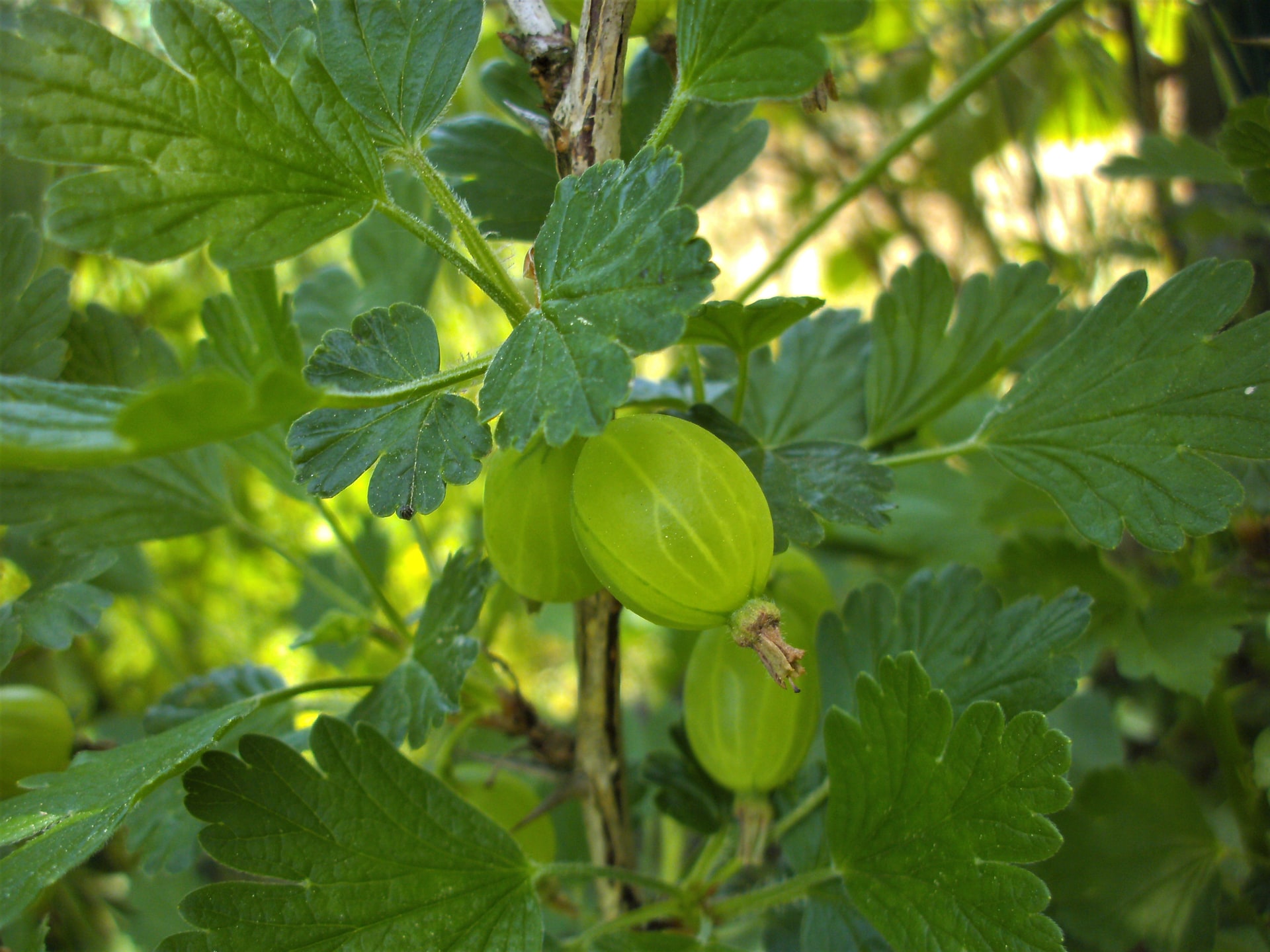Gooseberry Moth
Zophodia grossulariella Hb.
Pest Attacks:
- Fruit
Pest Description:
- The adult moth is grayish. The wings are grayish-brown and narrow, with a wingspan of 30 mm.
- Eggs are white, spherical, and about 0.5 mm in diameter.
- The caterpillar is about 20 mm long, green with a black head.
- The pupa is also 20 mm long and is found in a parchment-like cocoon in the soil.
Biology and Life Cycle:
- Moths fly during bud development. The female lays eggs singly or in small clusters on flowers, leaves, and fruits of gooseberries and currants. Embryonic development of the eggs takes 10 to 15 days. The caterpillars emerge from the eggs and develop over about two months. Young caterpillars attack the fruit. After feeding and developing, the caterpillars descend into the soil to pupate inside cocoons. They overwinter in this form.
- The pest has one generation per year.
Damage Caused:
- The caterpillars chew on the fruit and seeds. Affected fruits change color, from pinkish to dark red in larger fruits, leading to the confusion that the fruits are ripe, while most are still green.
Gooseberry Aphid
Aphis grossulariae Kltb.
Pest Attacks:
- Leaves and shoots
Pest Description:
- Wingless aphids are 1.2 to 1.8 mm in size, dark green to blackish-green. The cauda is light-colored. Antennae are shorter than the body. Winged forms have a black head and thorax with a green abdomen with dark stripes. Antennae are black, and the cauda is yellow.
- Eggs are shiny black.
Biology and Life Cycle:
- A monoecious species. Eggs overwinter on gooseberries or currants. Wingless founding aphids emerge from them. They are very common by April, forming numerous colonies from May onwards and actively spreading due to the high number of winged forms.
Damage Caused:
- Colonies cause severe leaf curling, which halts shoot growth. They secrete abundant honeydew.
Gooseberry Sawflies
Yellow Gooseberry Sawfly (Pteronus ribesii Sap.) and Black Gooseberry Sawfly (Pristiphora pallipes Lep.)
Pest Attacks:
- Leaves
Pest Description:
- The larvae of these species have three pairs of thoracic legs and seven pairs of abdominal legs. The body of the yellow sawfly larvae is greenish and covered with numerous black spots with short hairs.
- The body of the black sawfly larvae is bare.
Biology and Life Cycle:
- Sawflies appear in April and lay eggs on the leaves. The larvae develop from these eggs and then eat the leaves. The larvae stay in groups and pupate in the soil.
- They have 2 to 3 generations per year.
Damage Caused:
- The larvae damage the leaves by chewing them.
Gooseberry Moth
Abraxas grossulariata L.
Pest Attacks:
- Buds and leaves
Pest Description:
- The adult moth has wings with black and white patterns and a yellow-orange stripe in the middle of the forewings and near the head. The wingspan is 3.5 to 4 cm.
- The caterpillars have similar coloring to the adult moths. They are pale yellow with prominent black spots on the dorsal side and grow up to 4 cm.
Biology and Life Cycle:
- Caterpillars overwinter in the soil. In spring, they feed on the leaves. They pupate in mid-May in various places. Adult moths fly in June. After mating, they lay eggs on the underside of leaves. During summer, the caterpillars make small holes in the leaves and then go into hibernation.
Damage Caused:
- The caterpillars chew on buds and leaves.
Less Significant Gooseberry Pests
Other less significant gooseberry pests include:
- San Jose scale (Quadraspidiotus perniciosus Comst.)
- Currant clearwing (Synanthedon tipuliformis Clem.)
- Currant aphid (Cryptomyzus ribis L.)
- Salad aphid (Nasonovia ribis-nigri Mosl.)













































